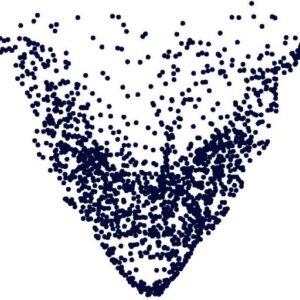Technion – Israel Institute of Technology
Department of Mechanical Engineering
An important part of modern engineering is the analysis and prediction of the dynamical behavior of physical systems. An omnipresent type of dynamic behavior is vibratory motion in which the system oscillates about a certain equilibrium position. This course on the theory of vibration is concerned with the oscillation of both rigid-body and continuous dynamical systems and includes derivation of their equations of motion (via both Newtonian and Lagrangian approaches), their solution (analytically and numerically) and analysis (frequency response, loss of stability and periodicity). Examples include those of classical mechanical systems (robotics, fluid-structure interaction, control) and current applications (micro- and nano- electromechanical systems). The objectives of this course include development and application of modern elements of vibration analysis for complex engineering systems.
Topics
- classification of dynamical systems, Newtonian modeling, stability of equilibrium.
- orbital stability, periodicity, harmonic balance, Poincare’ maps.
- Lagrangian modeling: energies, non-conservative generalized forces, holonomic constrains.
- free undamped vibrations, integrability, beats.
- free damped vibration, equivalent damping, backbone curves.
- flutter, self-excited vibration, friction induced vibration.
- forced harmonic vibration, primary and parametric resonances.
- multi-body vibrations, internal resosnances.
- continuous systems: string, rod, beam.
- free vibration of continuous systems: viscoelastic damping.
- forced vibration of continuous systems: Galerkins method, reduced order modeling.
- dynamic buckling and internal resonances.
- hybrid rigid-body and continuous systems, applications.
Course Texts
- Meirovitch, L., 1986, Elements of Vibration Analysis. (M 86).
- Meirovitch, L., 1997, Principles and Techniques of Vibration. (M 97).
- Selected scientific/technical papers and handouts (Matlab, Maple).
Additional references
- Review of Dynamics:
- Greenwood, D.T., Principles of Dynamics, 1988.
- O’ Reilly, O.M., Engineering Dynamics: A Primer, 2000.
- The History of Vibration:
- Rayleigh, J.W.S., The Theory of Sound, 1877 (Dover 1945).
- Timoshenko, S., Vibration Problems in Engineering, 1928 (1959).
- Den Hartog, J.P., Mechanical Vibrations, 1934 (Dover 1985).
- Advanced reading:
- Moon, F.C., Chaotic and Fractal Dynamics, 1992.
- Selected papers and handouts on ‘analytical dynamics’ and ‘nonlinear vibration’.
Procedure
Lectures: Tuesday 0830-1030, Lady Davis Bldg, #441.
Recitation: Tuesday 1030-1130, Lady Davis Bldg, #441.
Homework: 4 comprehensive (analytical/numerical) problem sets will be given.
Midterm (elective): 29/12/06 (0900)
Final exam: 26/2/07, 12/4/07.
The final grade:
%30 Homework problem sets (best 3 out of 4).
%70 Final exam contingent on a passing grade in the exam (55).
* the midterm grade can only improve the final grade and its weight is %35 of the total grade.
** the final exam can be replaced with a comprehensive (personal) problem set contingent on a
minimal grade of 85 in the midterm.
Prerequisite Courses
Semester 3: Solid Mechanics 2 (034029), Numerical Analysis (034033), PDE’s (104216).
Semester 4: Dynamics (034010), Linear Systems (034032).
* A student who did not pass ALL the prerequisites, will NOT be able to obtain a final grade in the course.
Teaching staff
Course Instructor: Oded Gottlieb
Consulting hours: Sunday 1630-1830
Lady Davis Bldg. #342
phone: 829-3158
oded@technion.ac.il
Teaching Assistant: Sharon Hornstein
Consulting hours: Tuesday 1430-1530.
Lady Davis Bldg. #266,
phone: 829-3151,
sharon_p@technion.ac.il
